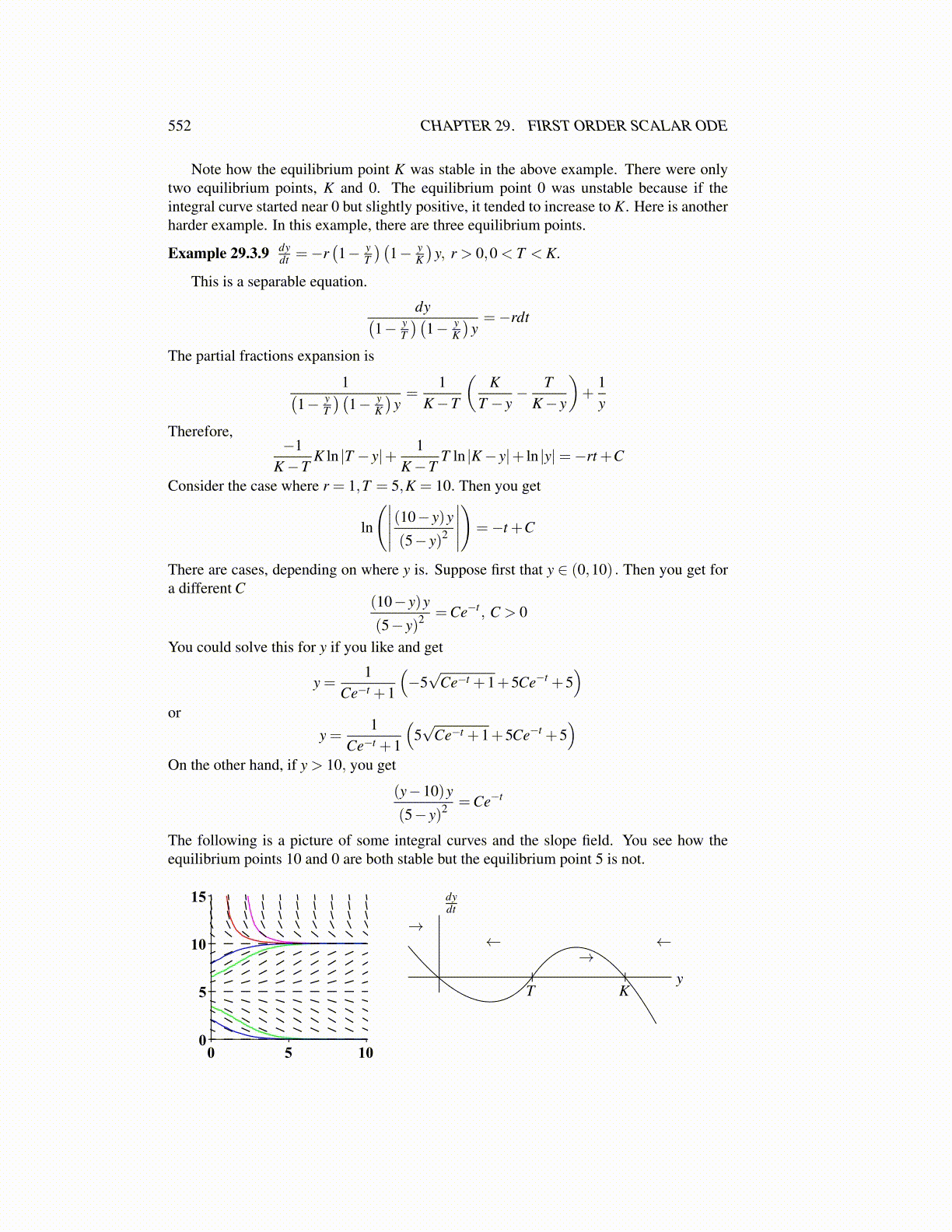
552 CHAPTER 29. FIRST ORDER SCALAR ODE
Note how the equilibrium point K was stable in the above example. There were onlytwo equilibrium points, K and 0. The equilibrium point 0 was unstable because if theintegral curve started near 0 but slightly positive, it tended to increase to K. Here is anotherharder example. In this example, there are three equilibrium points.
Example 29.3.9 dydt =−r
(1− y
T
)(1− y
K
)y, r > 0,0 < T < K.
This is a separable equation.
dy(1− y
T
)(1− y
K
)y=−rdt
The partial fractions expansion is
1(1− y
T
)(1− y
K
)y=
1K−T
(K
T − y− T
K− y
)+
1y
Therefore,−1
K−TK ln |T − y|+ 1
K−TT ln |K− y|+ ln |y|=−rt +C
Consider the case where r = 1,T = 5,K = 10. Then you get
ln
(∣∣∣∣∣ (10− y)y
(5− y)2
∣∣∣∣∣)
=−t +C
There are cases, depending on where y is. Suppose first that y ∈ (0,10) . Then you get fora different C
(10− y)y
(5− y)2 =Ce−t , C > 0
You could solve this for y if you like and get
y =1
Ce−t +1
(−5√
Ce−t +1+5Ce−t +5)
ory =
1Ce−t +1
(5√
Ce−t +1+5Ce−t +5)
On the other hand, if y > 10, you get
(y−10)y
(5− y)2 =Ce−t
The following is a picture of some integral curves and the slope field. You see how theequilibrium points 10 and 0 are both stable but the equilibrium point 5 is not.
T K
dydt
→←
→←
y